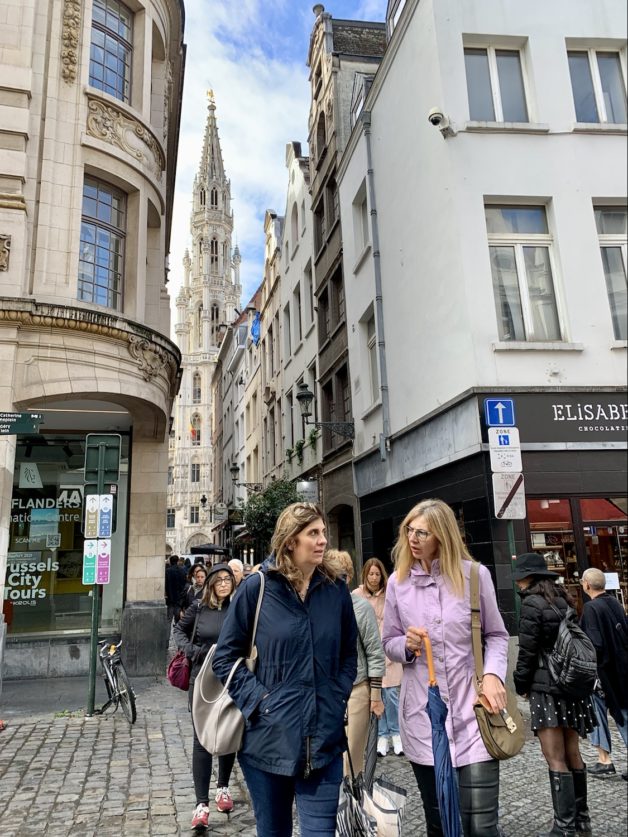
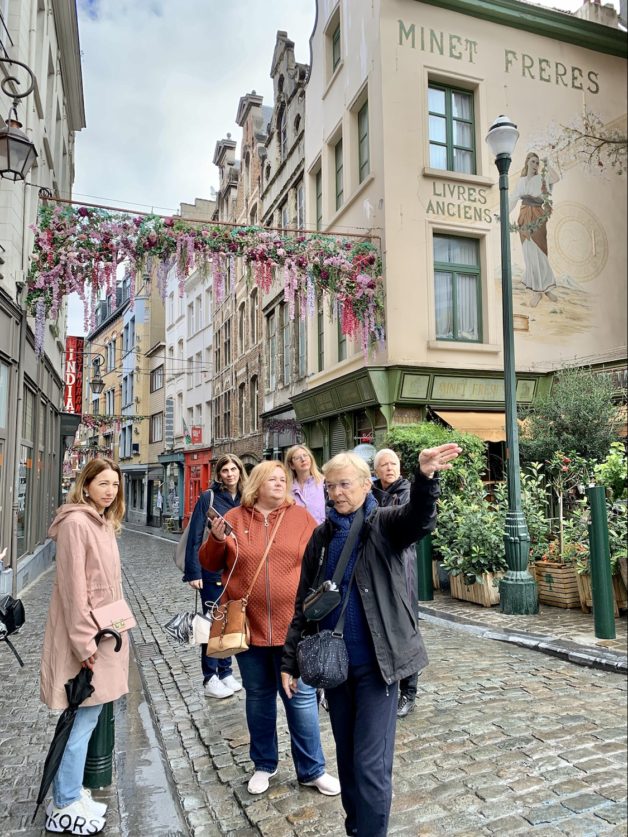

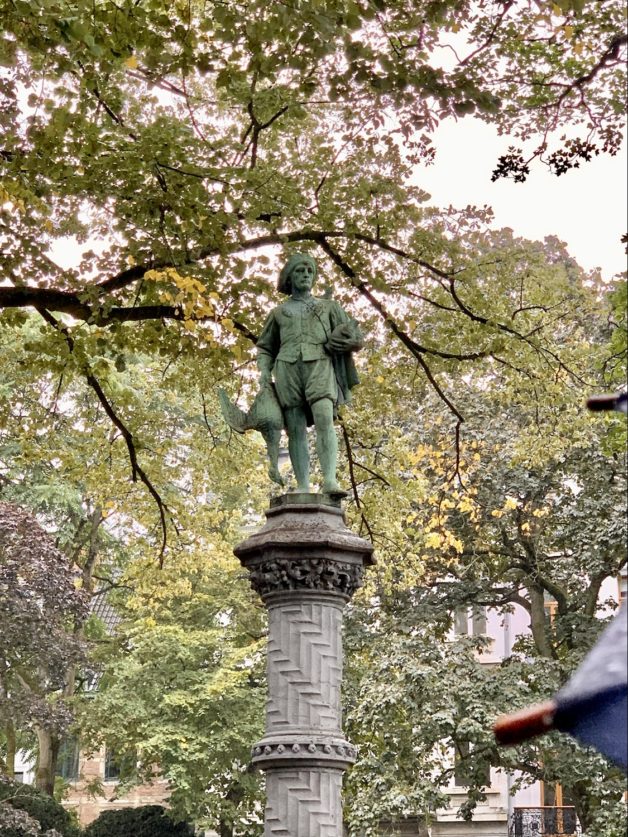
We are leaving Brussels for our next assignment before the end of the year, so I resolved to join the NATO International Club for as many historical walks as possible this fall. This would force me to spend more time downtown in historic Brussels—one of those things I always want to do, but don’t often actually do in my day-to-day life.
When the GUILD WALK rolled around, my metro line was running with delays, the temperature had dropped about 15 degrees overnight, and rain was forecast all morning. This is exactly why I need the NIC in my life: on my own, I would have stayed local to run errands and do chores. The NIC forces me to follow through on what I truly want to be doing, rain or shine!
So there we were: two dozen NIC members from around Europe and the world, standing in the rain, learning more about the guilds of 14th Century Brussels and how they shaped the city in ways we still see today. Here’s my write up for the NIC newsletter:
We all know that the guilds are responsible for the Grand Place’s coordinated and guilt appearance, but what is a guild exactly, and how did they have so much money back then?
Andree Jacquet began to answer these questions in the Parc du Petit Sablon on the September NATO International Club Guild Walk in Brussels’ historic center.
Back in the middle ages, trade associations of like-minded craftsmen banded together for protection and to control and elevate the quality of product they were known for. The guilds had three components: economic, political, and religious. The first guild to form was the military guild, which rose up to protect the Duke of Brabant, then later the city of Brussels by extension (this is an example of the political aspect of a guild). Other guilds soon formed: bakers, butchers, fishmongers, surgeons (the economical aspect). Guilds also banded together around their patron saints, attending mass together on their saint’s feast days and organizing activities, like Brussels’ famous Ommegang parade and festival (the religious aspect).
“The whole economy of the city was in the hands of the guilds for centuries,” Jacquet said.
Guild members had to first be a local citizen. Members had to be trained within the guild, and had to pay to enter the guild. Women (secretly) worked alongside their husbands, but were not allowed to have ownership. This system protected medieval business interests by protecting the quality of work and prevented outsiders from encroaching on lucrative local markets. Merchants outside the guild were welcome to trade—outside the city walls, and at a lower price.
Buying a loaf of bread? Bread baked by a guild baker might cost more than a loaf sold outside the gates, but it was guaranteed to contain a minimum weight of flour. Commissioning tapestries for your chateau? The weavers’ guild in Brussels could guarantee the highest quality of the materials and craftsmanship.
The 48 statues surrounding the Parc du Petit Sablon Parc each display a craftsman and tools of one of the guild trades: a hoop signifying the cooper, the painter with his brushes, the barber/surgeon has his scissors, the greaser holds up the source of his grease–a duck.
The guild walk continued to the Sablon Cathedral, around the old city walls demarcating acceptable places for guild and non-guild trading, to the Grand Place and down several side streets still named after their medieval guilds.






The guild halls around the Grand Place, rebuilt after the 1695 bombardment of the city, each bear clues to its guild on the facade. Today the lovely square holds tourists, weddings and cafes, but imagine it hundreds of years ago: It bustles with the prosperous bakers in their double-wide guildhouse near bread street, while the brewers guild displays hops and barley on its facade. The painters guild shows the comedy and tragedy masks of the arts, and the archers guild—a prominent military guild—is notable for its carvings of an archer shooting a snake, reminding the merchants how their guild helps good victorious over evil.
The walk finishes in the back alleyways that used to be a holding space for the butchers.
Before refrigeration, “What did you do to keep your meat fresh?” Jacquet asked. “You kept your animals alive!”
A storm broke over the city moments after the tour concluded, prompting a quick departure into cafes and metros, or perhaps back into the alleyways of the city, to dream anew of the ancient streets and mysterious lives that played out long ago in the city we now call home.


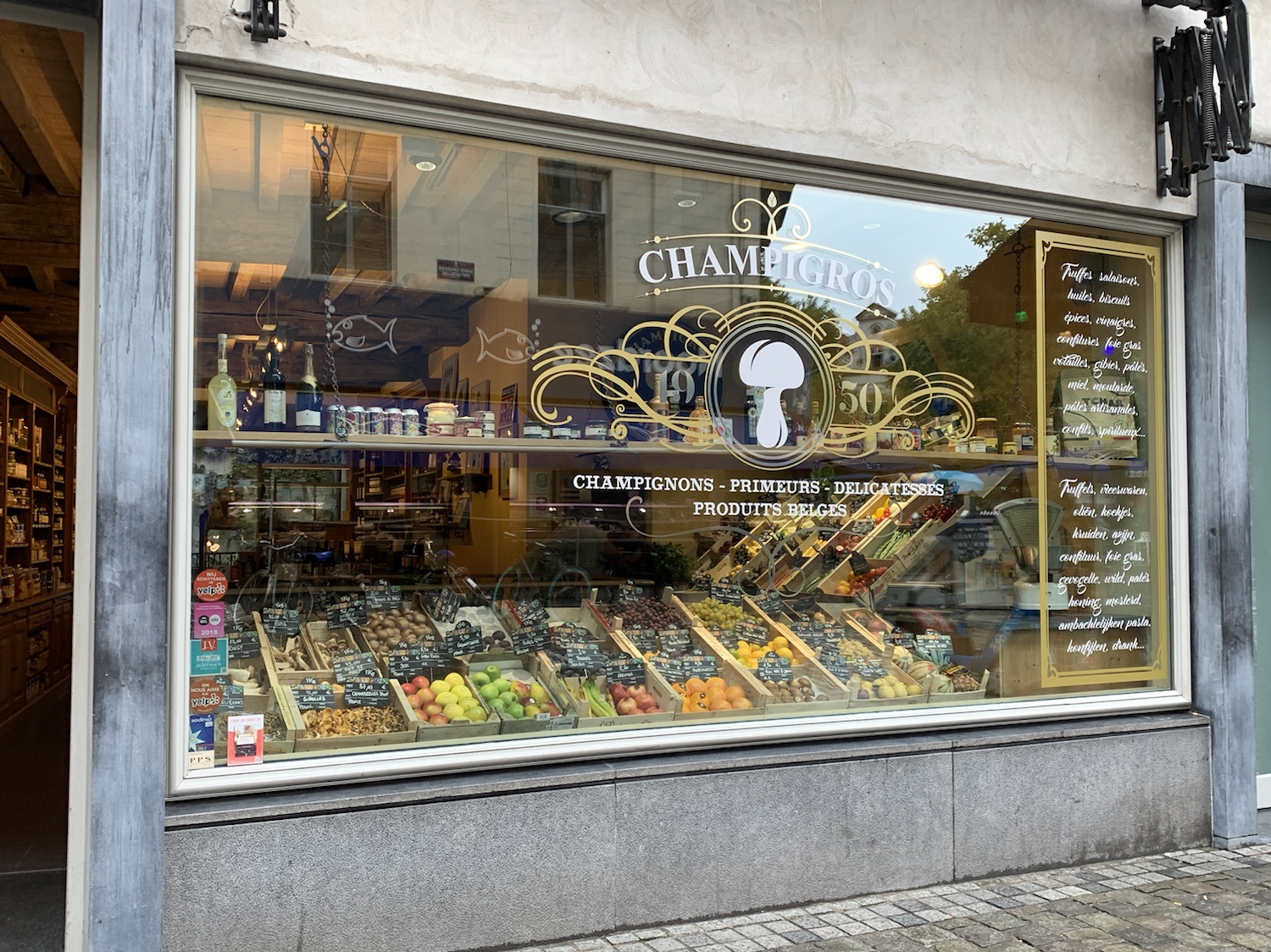

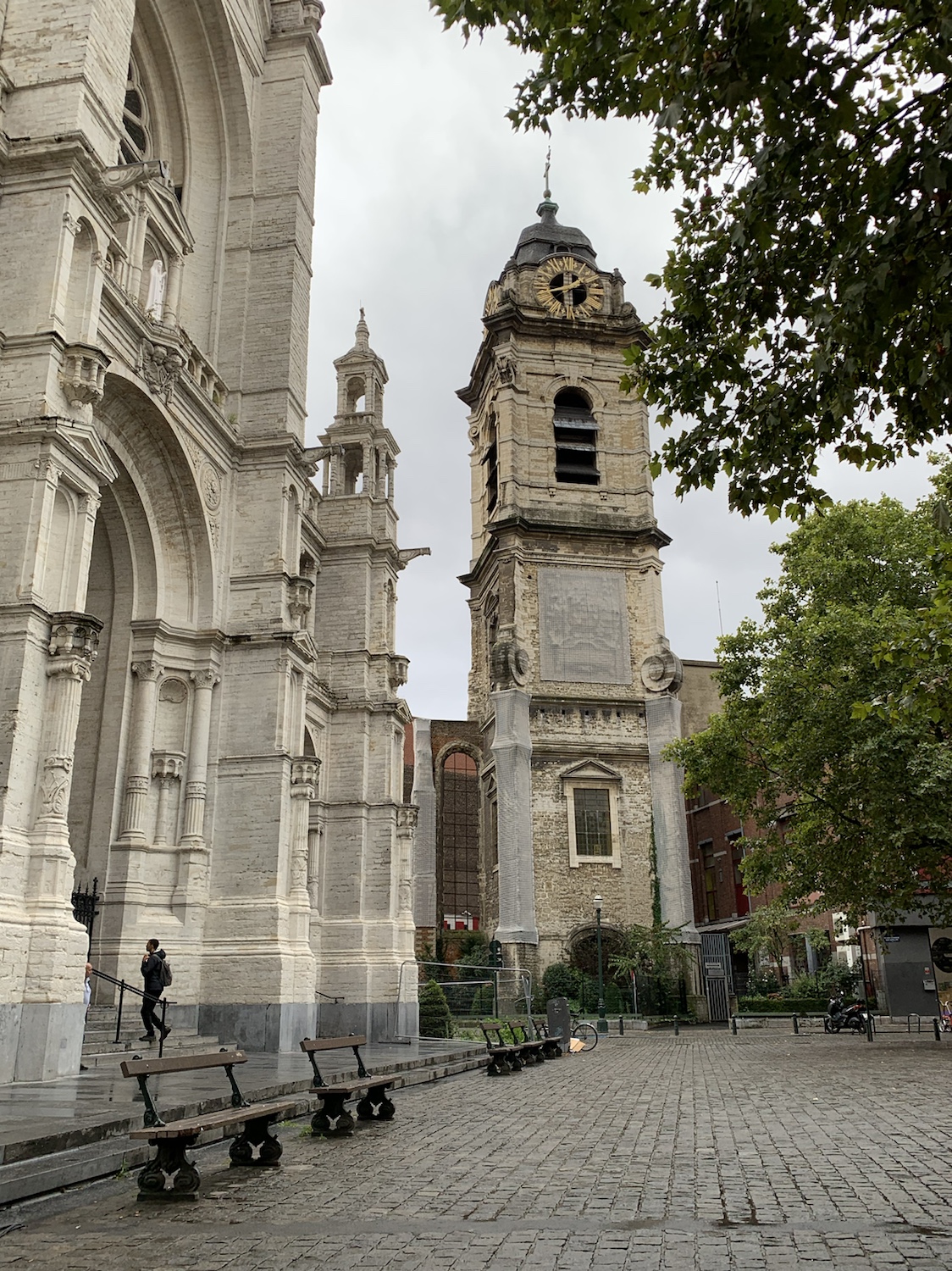

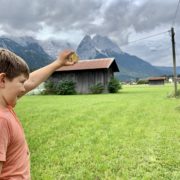 Honey Vending Machine
Honey Vending Machine New Beginnings
New Beginnings Up the Mountain
Up the Mountain Transit
Transit